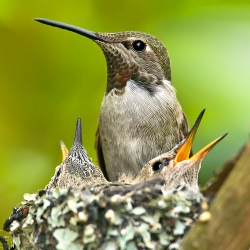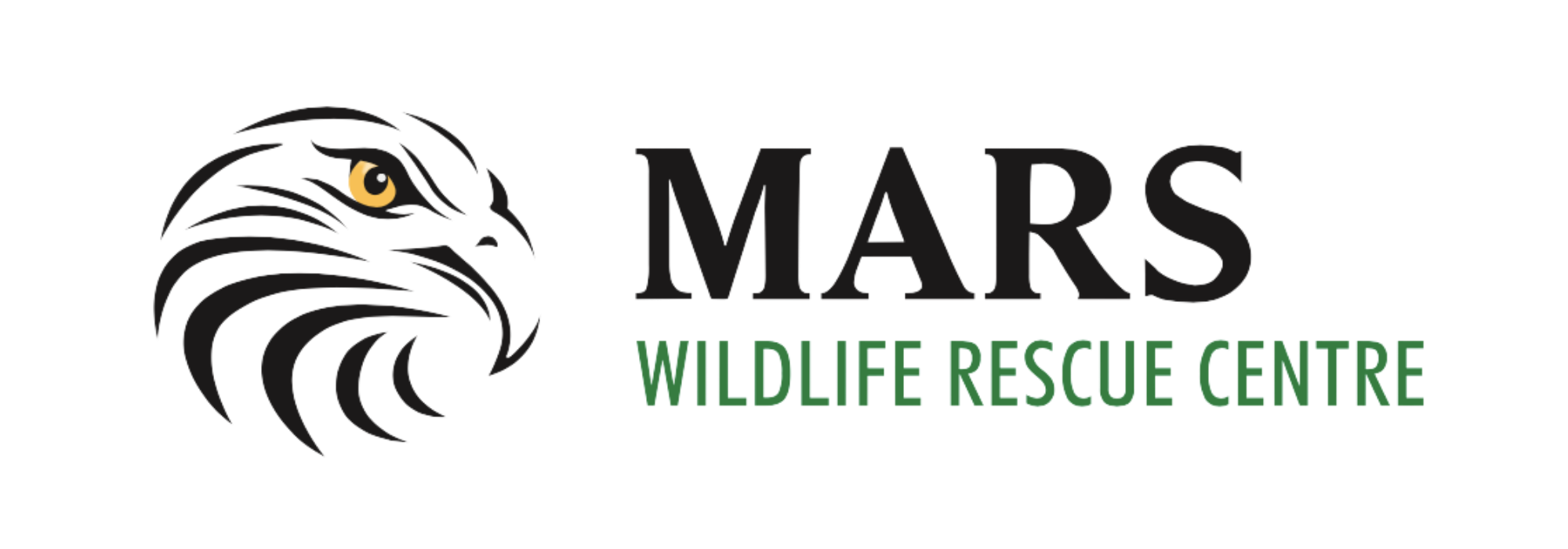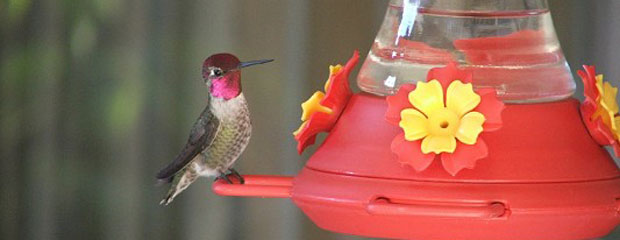MARS Moment 2013
by Sandy Fairfield, MARS Education Coordinator
I am always amazed by one of nature’s most spectacular birds; many hummingbirds are named after vibrant colors, amethyst, emerald, ruby and sapphire. There are over 300 species of hummingbirds in the world and they are only found in the Western hemisphere. Hummingbirds are the tiniest birds in the world; the bee hummingbird is the smallest, found in Cuba, it is only five centimeters in length. Vancouver Island is visited by the Rufous and Anna’s species and both cover a territory from Mexico to Alaska, a distance of approximately 3,000 miles in one year.
 Iridescence on hummingbird feathers makes them sparkle in the sunlight, sunlight is reflected changing the color when viewed from a different angle, and if there is no sun they appear to be black. Hummingbirds are often referred to as “living helicopters”; they have the ability to fly up, down, sideways and even upside down. Flexible shoulders allow the wings to rotate so they can hover in a stationary position. Hummingbirds are also one of the world’s fastest fliers reaching speeds of up to 60 miles per hour. As well as their speedy flying they are able to cover vast distances by storing extra fat to sustain them during the flight; it was once thought they hitched a ride on migrating swans or geese but this is not the case.
Iridescence on hummingbird feathers makes them sparkle in the sunlight, sunlight is reflected changing the color when viewed from a different angle, and if there is no sun they appear to be black. Hummingbirds are often referred to as “living helicopters”; they have the ability to fly up, down, sideways and even upside down. Flexible shoulders allow the wings to rotate so they can hover in a stationary position. Hummingbirds are also one of the world’s fastest fliers reaching speeds of up to 60 miles per hour. As well as their speedy flying they are able to cover vast distances by storing extra fat to sustain them during the flight; it was once thought they hitched a ride on migrating swans or geese but this is not the case.
In order for hummingbirds to sustain their energy level they are constantly feeding, it is estimated they consume fifty percent of their weight in sugar each day and nectar from flowers is one of their staple foods. These birds also need to eat small insects and spiders to provide them with protein and minerals. It was also believed that these birds only like red flowers but in fact they will dine on a variety of colours, although red does seem to be the most attractive to them. Many flowers that attract hummingbirds have special adaptations; the most attractive flowers are those with a tubular blossom that the hummingbirds can insert their beaks or tongues into. The bird is able to dine on the sweet nectar and, in return, the bird collects pollen on its feathers which it carries to the next blossom, providing pollination.
 Night time provides much needed rest for these tiny creatures; another fascinating adaptation for these birds is their ability to go into a state of “torpor”. By lowering their body temperature and heart rate they are able to conserve energy which sometimes makes them appear to have died; if you find a hummingbird on the ground that looks like this hold it for a few minutes to warm it up and often it will fly away. There has been a noticeable change in the habits of our local hummingbirds, Ana’s were seen locally only in the summer months but would migrate south for the winter. With so many people now feeding hummingbirds many Anna’s, like the Rufous, are remaining year round, sustained by feeders. It is fun to watch the antics that go on around the feeders as the birds establish their territory. Males become very aggressive and we have rescued birds that have been impaled on another’s beak whilst protecting their mate or feeder.
Night time provides much needed rest for these tiny creatures; another fascinating adaptation for these birds is their ability to go into a state of “torpor”. By lowering their body temperature and heart rate they are able to conserve energy which sometimes makes them appear to have died; if you find a hummingbird on the ground that looks like this hold it for a few minutes to warm it up and often it will fly away. There has been a noticeable change in the habits of our local hummingbirds, Ana’s were seen locally only in the summer months but would migrate south for the winter. With so many people now feeding hummingbirds many Anna’s, like the Rufous, are remaining year round, sustained by feeders. It is fun to watch the antics that go on around the feeders as the birds establish their territory. Males become very aggressive and we have rescued birds that have been impaled on another’s beak whilst protecting their mate or feeder.
Aerial mating displays are also fascinating to watch as the males complete aerial acrobatics that remind you of the Snowbird fighter pilots. Swooping and diving at great speeds, the birds make a variety of clicking or buzzing sounds at the top and bottom of the maneuver. Hummingbirds’ nests are also a feat of engineering – they build a diminutive nest out of lichens and moss, which is held together by wrapping the outside with spider webs; the webs provide elasticity for the nest and allow it to expand to accommodate the babies as they grow. MARS usually rescues several hummingbirds each year, usually after they hit a window. It is very difficult to care for these birds in captivity as their feeding habits are hard to replicate. It is safer for the birds if feeders are hung in trees or next to bushes that provide protection from predators; this also prevents the bird hitting the window, mistaking the reflection of trees as being the escape route. Feeders need to be cleaned regularly and please do not use nectar with red food dye. The feeders need to be changed more often in hot weather as fungus, mould and bacteria can build up in a hurry which are harmful to the birds. To attract hummingbirds and butterflies speak to your local garden center, these birds can provide hours of enjoyment in your garden.

